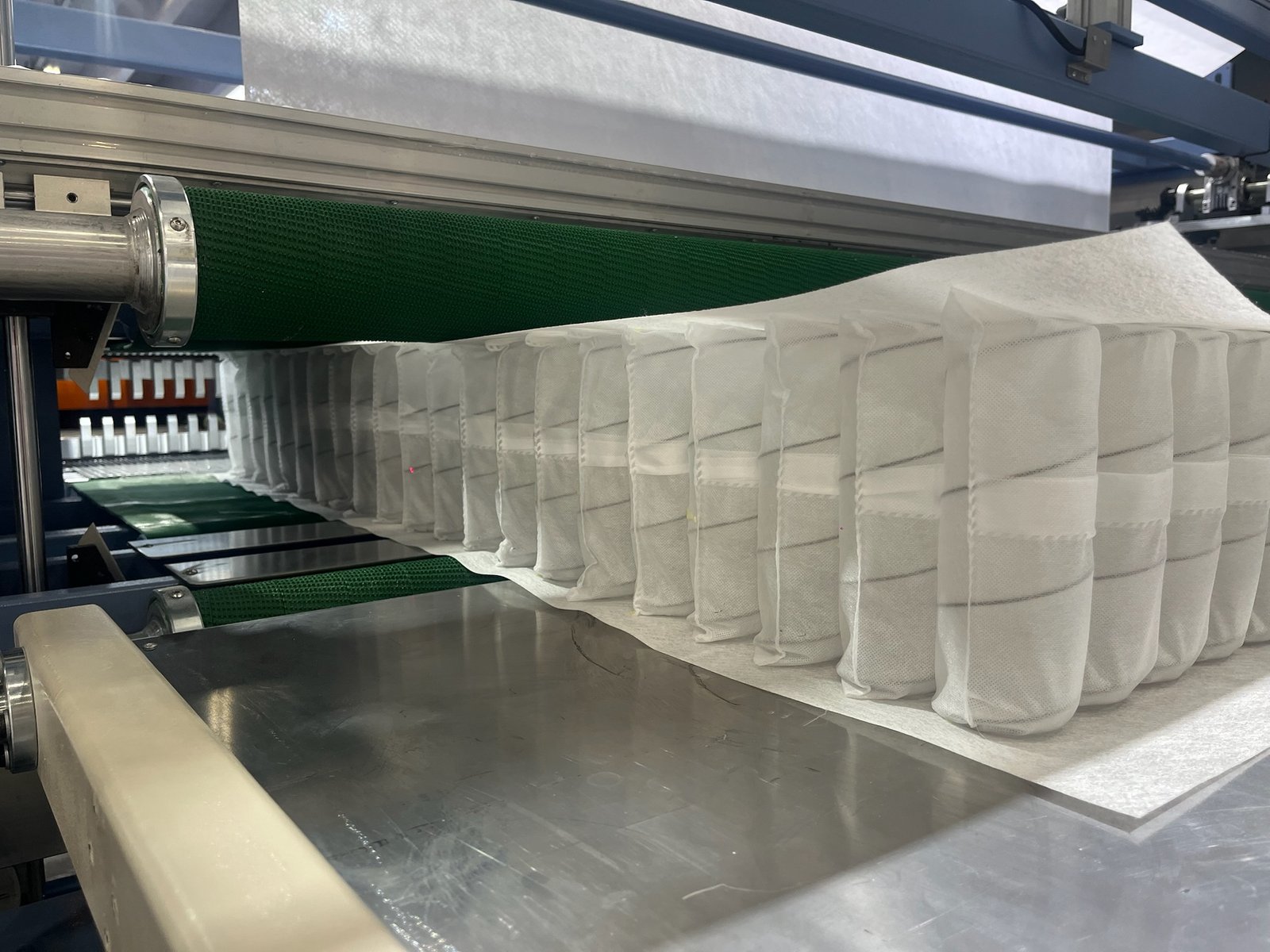
A small error in mattress production can lead to poor comfort, returns, and lost customer trust.
Precision is the foundation of mattress quality. It affects comfort, consistency, production efficiency, and long-term customer satisfaction.
Whether it’s cutting foam, assembling springs, or aligning quilted layers, every step matters. Let’s explore how accuracy plays a key role across the entire production line.
Why does material selection require such precision?

When a mattress starts with the wrong materials, no amount of craftsmanship can make it right.
Choosing the right materials—foam, springs, fabrics—is the first and most crucial step to ensure long-term performance and consistent comfort.
Memory foam, latex, and PU foams have different rebound rates, densities, and heat-retention properties. Likewise, the type and gauge of spring coils affect firmness, bounce, and body zoning.
If you use inconsistent foam blocks or low-grade spring wires, you’ll face:
- Uneven firmness across the mattress surface
- Early sagging and deformation
- Increased return rates due to discomfort
To ensure precision here:
- Use foam cutting systems that check density before slicing
- Buy coils from verified, spec-compliant suppliers
- Maintain batch records to match foam types with specific product lines
A mattress is only as good as what goes inside it.
How do cutting techniques ensure shape accuracy?
If foam panels or fabrics aren’t cut with millimeter-level precision, layers won’t align—and the mattress won’t function as designed.
Laser and die cutting allow manufacturers to achieve exact shapes, dimensions, and edge smoothness. Precision cutting reduces waste and ensures easier, more accurate assembly.
Common Cutting Methods in Mattress Factories:
| Technique | Accuracy | Use Case |
|---|---|---|
| Laser Cutting | ±0.1mm | Foam layers, quilting panels |
| CNC Blades | ±0.5mm | Edge trimming, base foam cutting |
| Die Cutting | ±0.2–0.3mm | Repeated shapes, small components |
Well-calibrated machines reduce material errors and fitting issues later during assembly. Misaligned cuts mean:
- Gaps between support layers
- Uneven glue distribution
- Trouble closing or sealing covers
We recommend recalibrating cutting equipment weekly, and verifying cut dimensions per production batch.
Is accurate assembly really that critical?
Absolutely. It’s the stage where all earlier efforts come together—or fall apart.
Accurate assembly ensures that each layer is properly aligned, compressed, and fixed in place, maintaining product uniformity and comfort distribution.
Assembly errors lead to:
- Uneven surface tension
- Poor pressure relief zones
- Glue overlap or gaps, affecting durability
At our plant, we follow a “layer-by-layer verification” system:
- Align spring core with bottom foam
- Add contour foam edge rails, checking height uniformity
- Apply glue evenly using servo-controlled sprayers
- Press upper foam + quilted panel, then seal sides under even heat
Each workstation has a cross-laser alignment guide, helping workers place each component within ±1cm tolerance. This alone improved our rejection rate by 28%.
What role does quality control play in achieving precision?
Even the best machines and materials won’t guarantee perfection without regular checks.
Quality control catches dimensional errors, pressure inconsistencies, and stitching misalignments before products leave the line.
At key stages, we check:
- Foam block thickness (±2mm tolerance)
- Spring tension zone variance (±5% coil bounce)
- Finished mattress height and firmness (±1cm)
We use pressure mapping pads to simulate human sleep profiles and identify high-pressure zones. Any product outside spec is removed for correction or disposal.
Consistent QC not only protects your brand but ensures comfort that customers actually feel.
How do measurement tools enhance manufacturing precision?
Guesswork doesn’t cut it in modern factories.
Advanced measurement tools—laser sensors, 3D scanners, digital calipers—allow manufacturers to check materials, layers, and completed mattresses down to the millimeter.
| Tool Type | Function |
|---|---|
| Digital Calipers | Foam and spring measurement |
| 3D Surface Scanner | Checks quilt pattern and surface alignment |
| Laser Distance Meter | Confirms edge straightness post-cut |
These tools reduce human error, speed up inspection, and generate digital logs for traceability. For large orders, this provides proof of process control to clients and partners.
Can employee training influence production accuracy?
Yes—significantly. The best tools are only as good as the hands using them.
Training programs that emphasize alignment, machine checks, and defect spotting help workers produce with precision, not just speed.
In our workshops, new staff are trained to:
- Use calipers for foam block check-ins
- Spot glue misting errors or block misalignment
- Reset servo gluing arms when switching mattress models
We run monthly refresher courses and reward line staff who report potential defects early. This bottom-up approach helps build a culture of care.
How does precision impact customer sleep?
Precision isn’t just a factory concern—it reaches the bedroom.
Mattresses built with accurate cuts, correct alignment, and tested firmness deliver better spinal alignment, pressure relief, and deep sleep.
When layers shift or spring cores tilt:
- Shoulders sink too far
- Lower back lacks support
- Users toss and turn, waking up tired
Customers won’t always know why they’re uncomfortable—but they’ll blame the mattress. That’s why we tie production tolerance tracking directly to customer feedback reports.
Precision = repeatable comfort.
Conclusion
Precision isn’t a luxury in mattress manufacturing—it’s a requirement. From cutting to assembly, training to inspection, every millimeter counts. Because when the product is made right, sleep comes naturally.
Get in touch with us for tailored solutions! We look forward to collaborating with you and shaping a brighter future together!
📞 | WhatsApp:+86 15220512074
📧E-mail:zhongliantec@gmail.com
Web | Link:mattressmachineryzl.com
